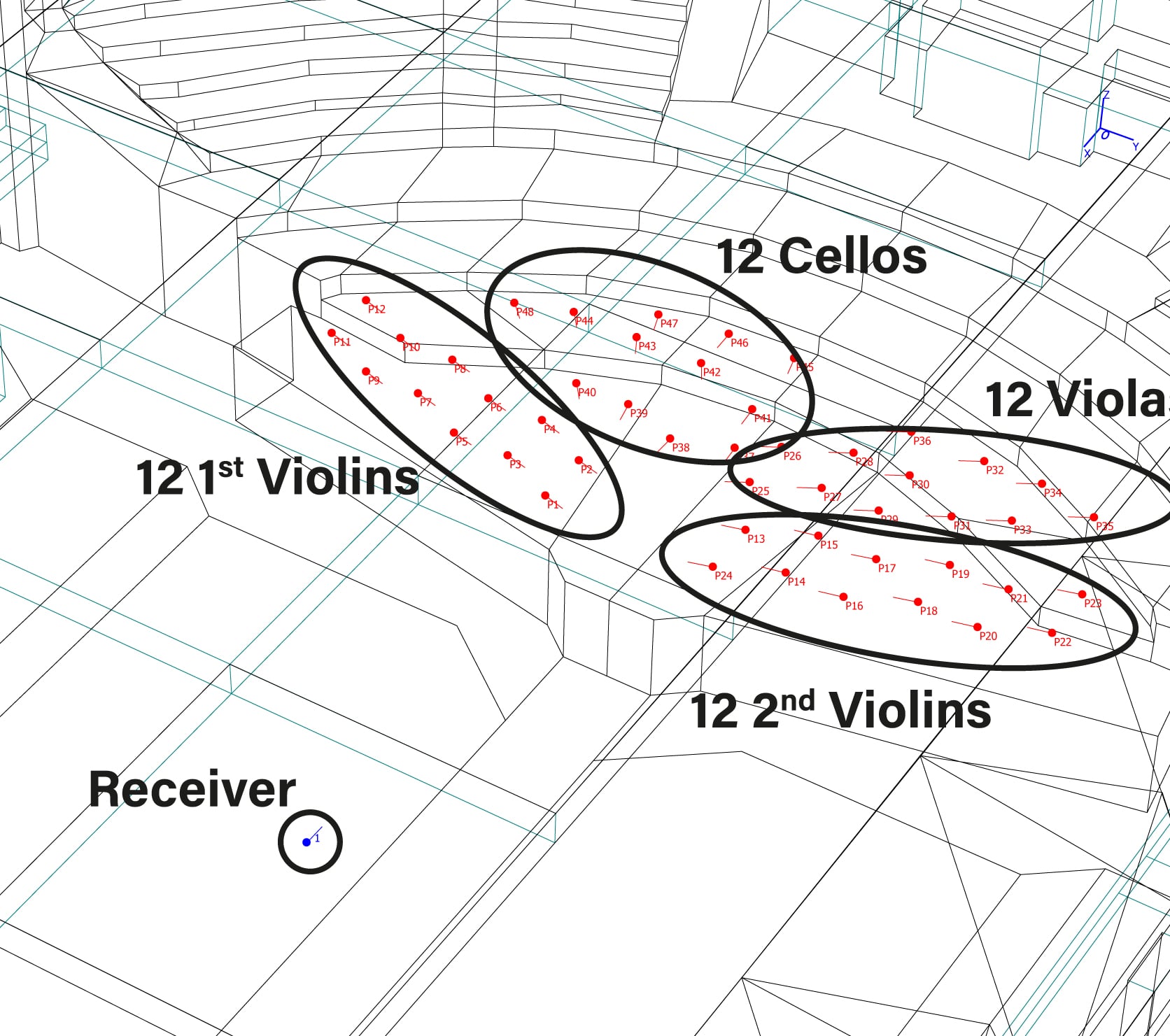Bach's Orchestral Suite No.3 in D major, BWV 1068 (Air).


Anechoic recordings (quartet)
Quartet in the room
View from receiver
Demo sounds, conductor position
View from receiver

Orchestra with 12 1st Violins, 12 2nd Violins, 12 Violas and 12 Cellos
To compare the colouration of the original quartet with the colouration of the full orchestra as in a A-B test, we choose to multiply each instrument by the same number, i.e. 12 times. Them we end up with the sections illustrated in the the picture below.

View from receiver
Orchestra with 12 1st Violins, 12 2nd Violins, 12 Violas and 12 Cellos
View from receiver

Orchestra with 12 1st Violins, 10 2nd Violins, 8 Violas and 6 Cellos
As a next step, we perform the same auralisation with the typical modern orchestra arrangement of 12 1st violins, 10 2nd violins, 8 violas and 6 cellos, as mentioned in the beginning of the section. Therefore, this time we deactivate part of the strings in each section. The result seems more balanced between low and high frequencies in this case.
View from receiver
Demo sounds, audience position 2
View from receiver

12 Violins using a professional performance
As a last example, we attempt to convert an anechoic file from a professional performance into a chorus. We apply the same settings for the chain of effects as for the previous example to generate a section of 12 violins. This time the file is an excerpt from the 1st violin of Mozart’s 40th Symphony. The recordings were performed at the Technical University of Denmark. See the following paper:
M.C. Vigeant, L.M. Wang, J.H. Rindel, “Investigations of orchestra auralizations using the multi-channel multi-source auralization technique,” Acta Acustica/Acustica, Vol. 94, pp. 866-882, 2008.
View from receiver
Demo sounds, audience position 3
View from receiver


